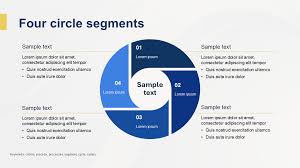For the beginners on the block of equity markets, stock analysis of past and present performance serves to kick-start the evaluation process. Tata Motors, being a prime company in the automotive market of India, becomes the cynosure of these new investors to its situation and movement in share performance.
Basics: Tata Motors and Stock Movement
Tata Motors belongs to the Tata Group and is in commercial and passenger vehicles. Its shares are listed on the National Stock Exchange (NSE) and Bombay Stock Exchange (BSE). Like any public company, Tata Motors’ share price is influenced by numerous internal and external elements: earnings reported every quarter, launches of new products, trends in automotive industries worldwide, and other global macroeconomic indicators such as interest rates and fuel prices.
Step 1: Open a Demat Account
The process of opening demat accounts consists of the following:
Due diligence on Depository Participant (DP) – All banks, stockbrokers, or online sites may act as DPs.
Complete KYC Requirements – Provide identification proof and address proof stating the Aadhaar card, PAN card, and a passport-size photo.
Linkage with Trading Account – This is to allow for actual execution of necessary transactions in the stock market.
Your Client ID should be sent to you now. This is an identification number that you will then use for every transaction in the future.
Many brokers today allow fully online demat account opening and may activate by the end of 24-48 hours.
Step 2: Observe Tata Motors Share Price and Volume
Once you have opened your Demat account, start the observation of the historical and real-time performance of Tata Motors share price. This price data is available on financial news portals, stock exchanges, and broker dashboards.
Look for:
Daily High and Low- Understand intraday volatility.
52-Week High and Low- Understand whether the stock is trading near its highest peak price or price at its lowest.
Volume Trends- Increasing activity in volume can be attributed to investor sentiment or activity due to some news.
Moving averages (these could be 50-day or 200-day) give a perspective of price action in relation to time.
Step 3: Look up Financials and Earnings Statements
Going over the financial performance of a company is very important. Tata Motors releases quarterly and yearly statements, including the following listed items:
Revenue and Net Profit/Loss (these indicate the health of the business).
Earnings Per Share (EPS-this indicates the proportion of profit assigned to each share).
Debt Levels-High debt may hamper cash flow and further growth.
Step 4: Investigation of Macro-Market and Industry Trends
The market trends impacting Tata Motors are generally of domestic and foreign nature in tandem with the road ahead. Look for some of the following factors:
Raw Material Costs- Prices for steel, rubber, and energy directly hit production costs.
Interest Rate and Consumer Demand- They determine vehicle sales, particularly in the passenger category.
Government Policies- EVs incentives, emission regulations, and infrastructure projects drive demand.
Step 5: Compare To Others in The Industry
Some key comparisons should include the relative performance of Tata Motors against other automotive companies like Mahindra & Mahindra or Maruti Suzuki. Key parameters to consider are:
Price-to-Earnings Ratio
Debt-to-Equity Ratio
Return on Equity.
This ultimately gives you a feel for the performance of Tata Motors on profitability, efficiency, and valuation.
Step 6: Keep Updated with News and Analyst Reports
The development of news can give insight into some of the short-term share price movements. There are some events where sentiment is formed through product launches, management changes, global partnerships, and economic events.
Target prices and the outlook formed in-house by broker analyst reports may help in forming your own judgement. Just be sure to find opinions from multiple sources instead of blindly taking a single viewpoint.
Step 7: Goal Setting and Keeping a Level Head
Now when we refer to first-time investors, we would mean that the entire investment should have a long-term view. Set conspicuous financial goals and do not act on the tips of the moment. The share price of Tata Motors may very well fluctuate due to several short-term events, but in the long run, it is always the business fundamentals that sway.
Avoid being the stubborn buyer or seller. Instead, review your investment thesis based on periodic consideration and through updates on the company’s performance throughout the year.
Conclusion
A thorough analysis of Tata Motors’ share performance entails a little technical analysis and a lot of fundamental analysis. Newer investors will develop a systematic approach that will encompass looking at their price trends, financials, and developments occurring in the industry.






